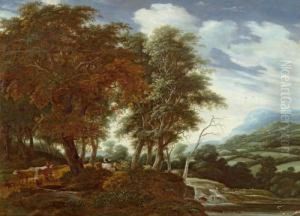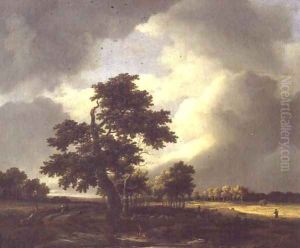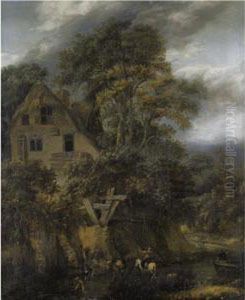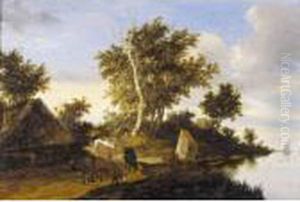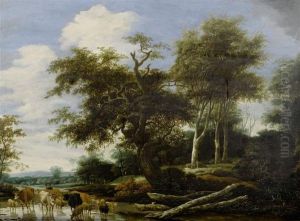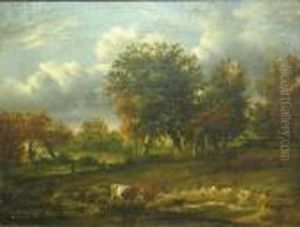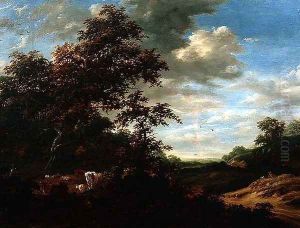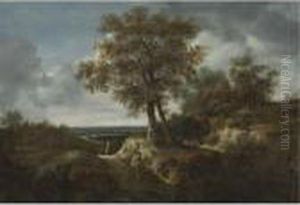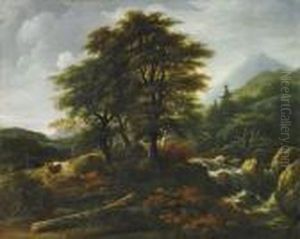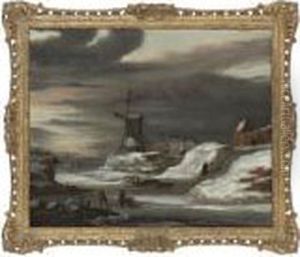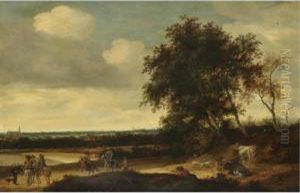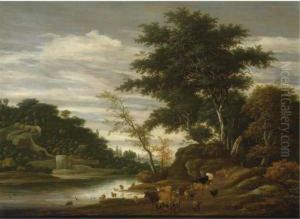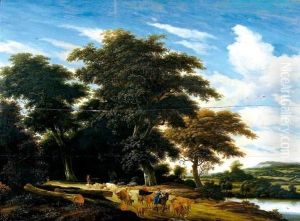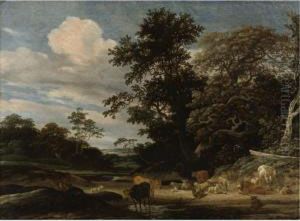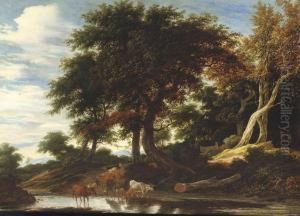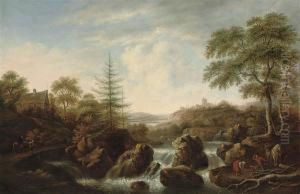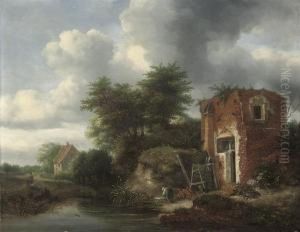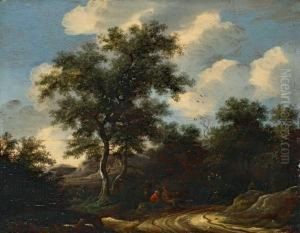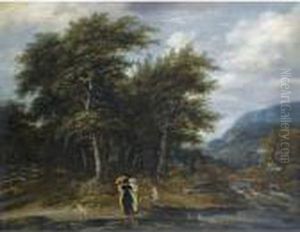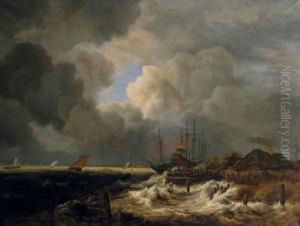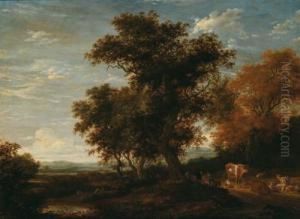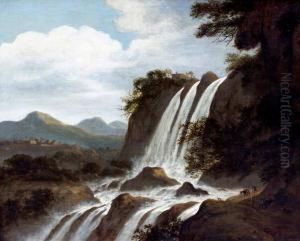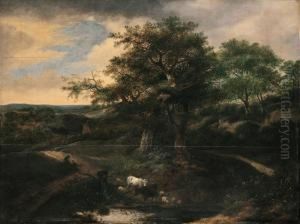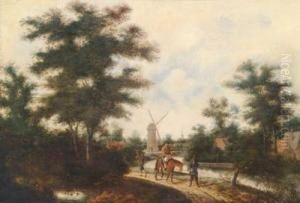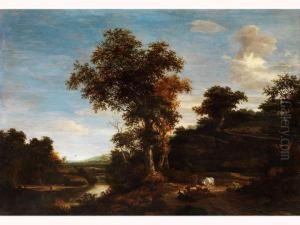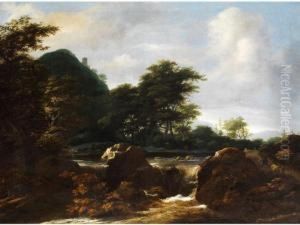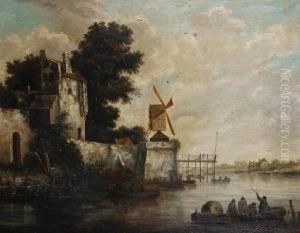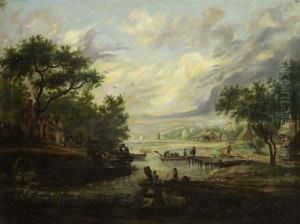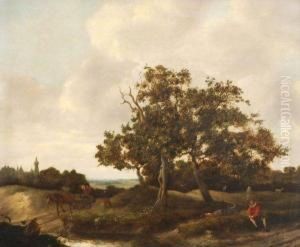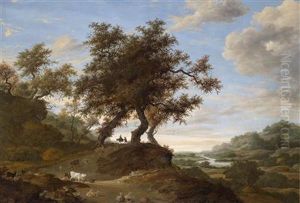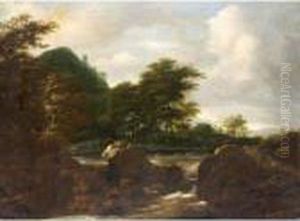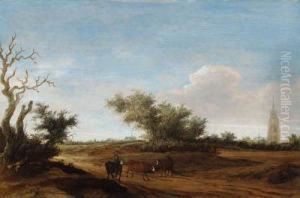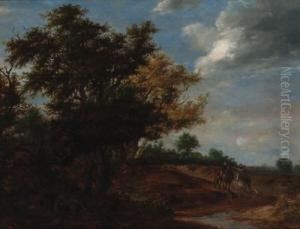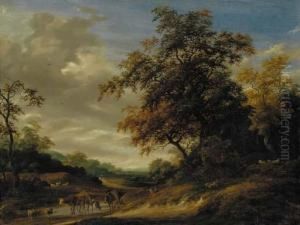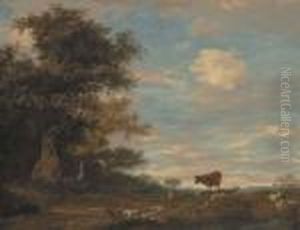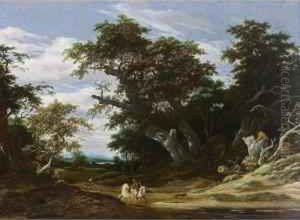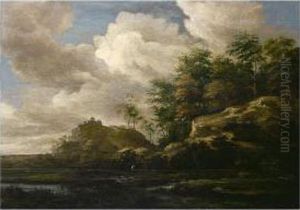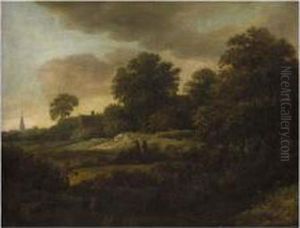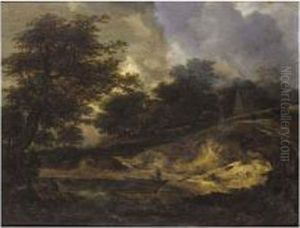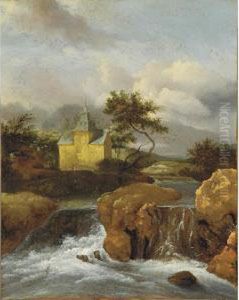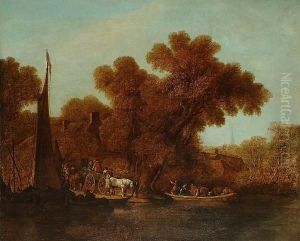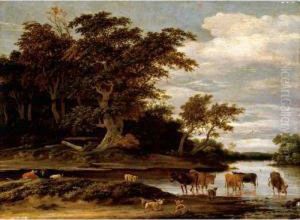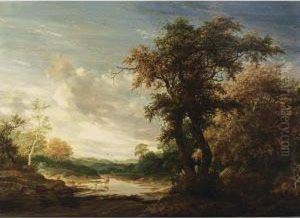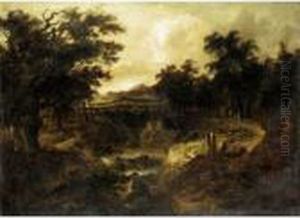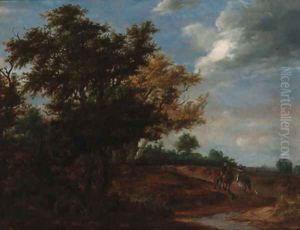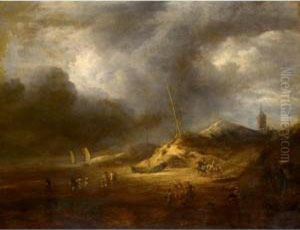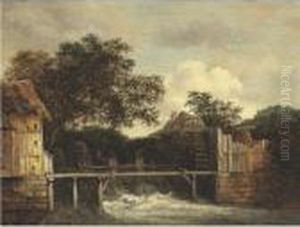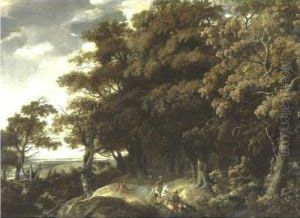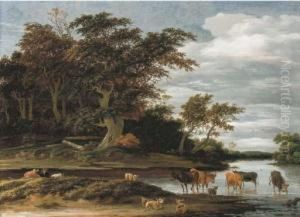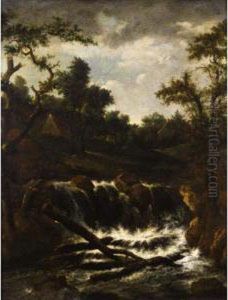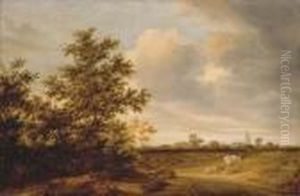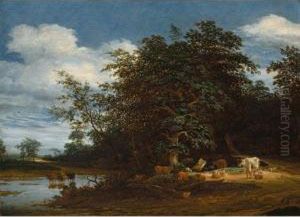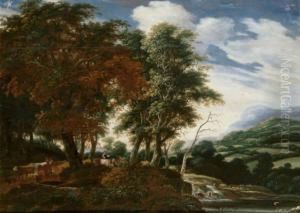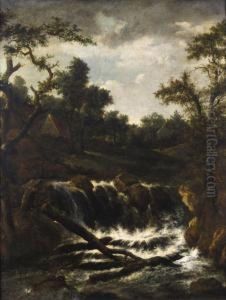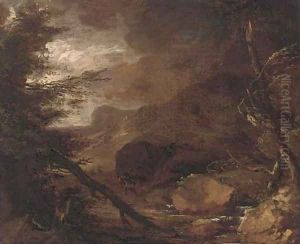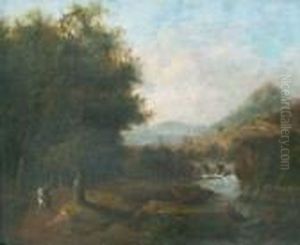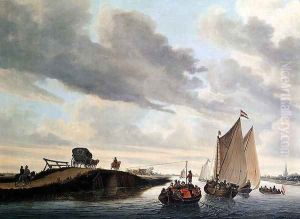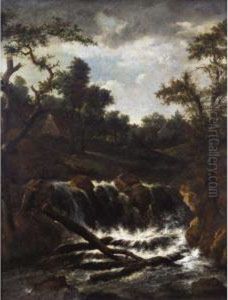Jacob Salomonsz. Ruysdael Paintings
Jacob Salomonsz. Ruysdael was a Dutch Golden Age painter who lived and worked during the 17th century. He was born around 1629/1630, in a period characterized by a great flourishing of Dutch art, trade, science, and military power. Although often overshadowed by his more famous relative, Jacob van Ruisdael, Jacob Salomonsz. Ruysdael nevertheless contributed to the Dutch landscape painting tradition with his own unique style and focus.
Jacob Salomonsz. Ruysdael's exact birthplace is uncertain, but it is known that he belonged to a family of painters, which included his father Salomon van Ruysdael, a well-known landscape painter. Jacob Salomonsz. likely received his artistic training from his father and was influenced by his style, which included a focus on landscapes, with particular attention to atmospheric effects and pastoral scenes.
Ruysdael's work often depicted the flat, lush countryside of Holland, with its wide skies and waterways. He was adept at painting the effects of light and shadow, and his works often evoke a sense of calm and tranquility. Despite his talents, Ruysdael did not achieve the same level of fame as Jacob van Ruisdael, and relatively little is known about his life compared to other artists of the period.
His paintings were well-regarded in his time, and he was a member of the Haarlem Guild of Saint Luke, which was an association of artists of the time. This membership indicates that Ruysdael was a professional artist recognized by his peers. However, his works were often attributed to other artists, including his famous relative, which may have affected his legacy.
Jacob Salomonsz. Ruysdael's date of death is also a matter of some uncertainty, but he is believed to have died around 1681. Since there are few records of his life and fewer of his works have been definitively attributed to him, Ruysdael remains a somewhat enigmatic figure in the history of Dutch painting. Nonetheless, his surviving works continue to be appreciated for their craftsmanship and serene beauty, and they provide insight into the Dutch landscape tradition of the 17th century.
